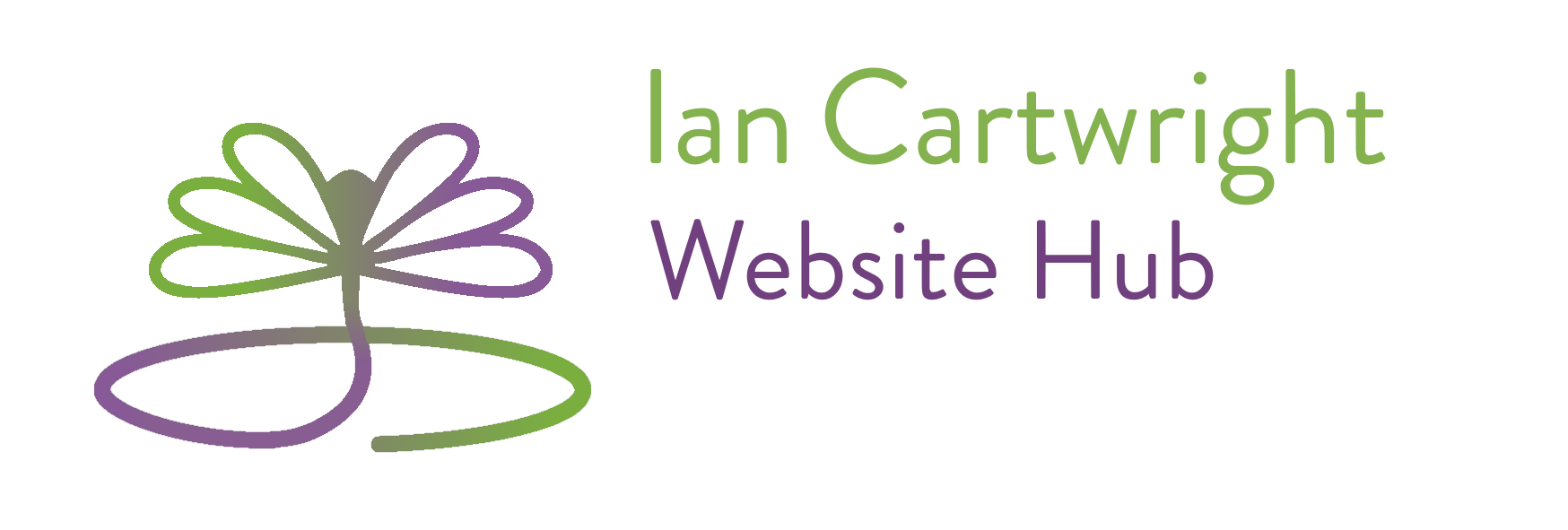There’s lots of ways to answer this. CFT (Compassion Focused Therapy) is a psychological therapy which aims to help reduce distress and psychological difficulties, as well as increasing happiness, wellbeing and flourishing. CFT does this by helping people to cultivate their compassionate minds, which in turn, allows them to engage with the difficulties they are facing in a wise and helpful way.
Ultimately, this approach helps people to become more compassionate in three directions:
- to others
- from others
- to themselves (self-compassion)
What is Compassion?
To understand “What is Compassion Focused Therapy?”, we first need to think about what compassion is.
There is a long history of compassion being held as a powerful way of relieving suffering and human distress.
In CFT, we define compassion as “…a sensitivity to suffering in self and others, with a commitment to relieve and prevent it.”
A useful way of understanding this definition is to see how it holds two related but separate parts:
- Being able to notice, engage with, tolerate and understand difficulties, distress or suffering
- Being able to take wise action to manage, reduce, relieve and prevent difficulties, distress or suffering
Although people sometimes think that compassion just involves being nice, kind and warm, it’s important to recognise that it often also requires courage and strength.
For example, compassion to others could be observed when a firefighter enters a burning building to save someone trapped inside.
The firefighter is aware of the trapped person’s distress (1st part of compassion), and has trained to take wise steps to rescue them (2nd part of compassion). Clearly here their compassion is not soft or gentle, but instead, is underpinned by courage and strength to move towards danger in order to alleviate someone’s distress.
Similarly, self-compassion, particularly when it involves engaging in painful internal experiences, like shame, fear and trauma, needs a big dose of strength and courage to enable us to tolerate painful feelings in order to find ways to alleviate our pain.
The Three Flows of Compassion
CFT is unique in compassion-based approaches, as it highlights the importance of three key flows of compassion:
- compassion to others
- compassion from others
- self-compassion
Each of these flows are important, and are related to psychological distress and wellbeing in different ways. And whilst self-compassion is a significant focus, we’re interested in how to cultivate all of the flows.
Alongside understanding the three flows of compassion, it’s also useful to consider the fears, blocks and resistances (FBRs) to compassion. These are common for many people, and can be a major focus of therapy and Compassionate Mind Training. Research has found that following therapy and CMT, the fears of compassion are (on average) significantly reduced.
How did CFT develop?
CFT was developed over a number of decades by Professor Paul Gilbert, a clinical psychologist based in the UK. He developed CFT in part as a response to the realisation that some people – particularly those high in shame and self-criticism, who often had difficult or traumatic early life experiences – didn’t benefit from standard therapeutic interventions as other people with less severe difficulties tended to.
Part of Paul’s insights linked to a recognition that many of his clients had an internal voice that was highly self-critical, hostile and angry, and that this seemed to block the potential helpfulness of therapy. So CFT emerged as a way of understanding our internal, self-to-self relationship, and finding ways to shift this from self-criticism to self-compassion.?
What ideas and theories does CFT draw from?
At its heart, CFT is a highly integrated, biopsychosocial approach. This means it draws upon and from a wide range of therapeutic and scientific ideas, including:
- Attachment theory
- Developmental psychology
- Social psychology
- Evolutionary theory and evolutionary psychology
- Cognitive Behaviour Therapy (CBT)
- Psychodynamic approaches and ideas
- Neuroscience and neurophysiology
- Social psychology
- Buddhist principles and practices
Although CFT was initially developed for people with difficult and sometimes traumatic backgrounds, who often struggled with high levels of shame and self-criticism, many studies now show that CFT is an effective approach to working with a variety of psychological and mental health difficulties.
What's involved in a CFT session?
CFT is similar to other therapies, in that the therapist will spend some time getting to know the client, the difficulties they’ve been experiencing, and how they might have developed (for example, by thinking about someone’s experiences in life, and how these might have impacted what they are going through today). They’ll do this in part by asking questions and bringing this understanding together in something called a formulation a bit like a map to help both therapist and client understand what led to some of the difficulties being experienced, but what direction therapy might take to relieve these. All of this will be done whilst establishing a safe, trusting and warm therapeutic relationship.
As a part of some of the early sessions, the therapist will introduce some ideas that are central to the approach, like the tricky brain and the three system model, and help their client to understand how these apply in their lives. The therapist will then go on to help the client to cultivate their compassionate mind. This means learning about the different skills that help us to be compassionate to ourselves and others, and also how to find it easier to receive compassion and care from others. As part of this process, clients will be introduced to varies types of skills training known as Compassionate Mind Training (CMT). These may may include various guided exercises and practices like:
- Attention training
- Mindfulness practice
- Breathing and body practices
- Imagery practices
- Compassionate action
- Chair work
- Expressive writing (compassionate letter writing)
- Appreciation and gratitude practice
- Working with multiple parts
- Balancing thoughts
Depending on the type of difficulties that clients might be having, there may be a particular focus on working with common difficulties like high levels of shame and self-criticism and various fears of compassion. CFT has a variety of techniques and interventions to help people with this.
Outside of therapy sessions, clients will have the opportunity to practice the exercises and meditations often through guided audio files, the Self-Compassion App or self-help books (for example, The Compassionate Mind Workbook).
But of course, all of this will happen within a kind, caring and compassionate atmosphere. The therapeutic relationship is central to the process of CFT, so the therapist will strive to create a safe and empathetic space for the client, in which difficulties and distress can start to be shared in a way that feels helpful, and not overwhelming.
CFT is primarily a ‘human’ approach, in that we recognise that all of us have been bestowed with a tricky brain that easily gets caught up in loops; that we have a threat system that comes pre-packaged with emotions like anger, grief and shame that can be difficult to manage and can cause us and others pain; that all of us have been shaped by experiences in like, many of which we had little or no control over. And that this applies to the therapist, just as much as it does to the client. So the therapeutic relationship is crucial in creating the conditions for positive change and improved emotion regulation.
What issues are treated by CFT?
Whilst we’ve been looking at ‘What is Compassion Focused Therapy?’, it’s also important to think about what difficulties it can help with.
CFT was originally described as a transdiagnostic approach to working with psychological and mental health problems. There are now published studies showing CFT’s effectiveness working within clinical and none clinical settings
From a clinical perspective
- Depression
- Burnout
- Anxiety
- Obsessive Compulsive Disorder (OCD)
- Trauma/Post Traumatic Stress Disorder (PTSD)
- Eating disorders (like anorexia or bulimia)
- Bipolar disorder
- Psychosis
- Personality difficulties
- Suicidal thoughts and self-harm
- Psychological problems in health conditions (like head injury, chronic pain and cancer)
- Sexual difficulties
- Intellectual difficulties
- Psychopathic traits
It’s also worth noting that it’s not just mental health diagnoses that CFT has been shown to be helpful for. There’s also lots of evidence that it helps to reduce:
- Shame
- Self-criticism
- Worry
- Rumination
- Perfectionism
- Difficult emotions
- Attachment insecurities
- Feeling inferior
And recent research has found that CFT isn’t just about reducing difficulties or problems. Studies have found that CFT helps to increase wellbeing, positive emotions and of course, the three flows of compassion – compassion to others, compassion from others, and self-compassion.
How does CFT work?
Key to the research has been establishing it as an evidenced based therapy, but that the evidence is across multiple levels. There’s lots of ideas about this, including:
- through the supportive and healing aspects of the therapeutic relationship, collaboration and human connection
- by helping us to understand that the way our brains have evolved means they can be very ‘tricky’ to manage, as they easily get caught up in thinking-feeling ‘loops in the mind’
- that we have been shaped by many things in life (e.g. our genes, our relationships, experiences and environments), many of which we had little control of
- through bringing change to our three emotion systems, and in particular, by changing our experience with our threat system, giving us a more balanced and sustainable connection to the drive system and crucially, helping us to experience and use the soothing system
- by helping us to improve the three flows of compassion – to others, from others and to ourselves
- by reducing the fears, blocks and resistances of compassion
- by reducing shame and self-criticism
- by helping us to cultivate a new identity
- by turning the compassionate mind towards common human difficulties
Interestingly, a variety of research studies have found that using the skills and practices in CMT also bring important changes to our brains and bodies, for example, through stimulating the vagus nerve.




